5 Tips For Informing Your Follow-Up Strategy
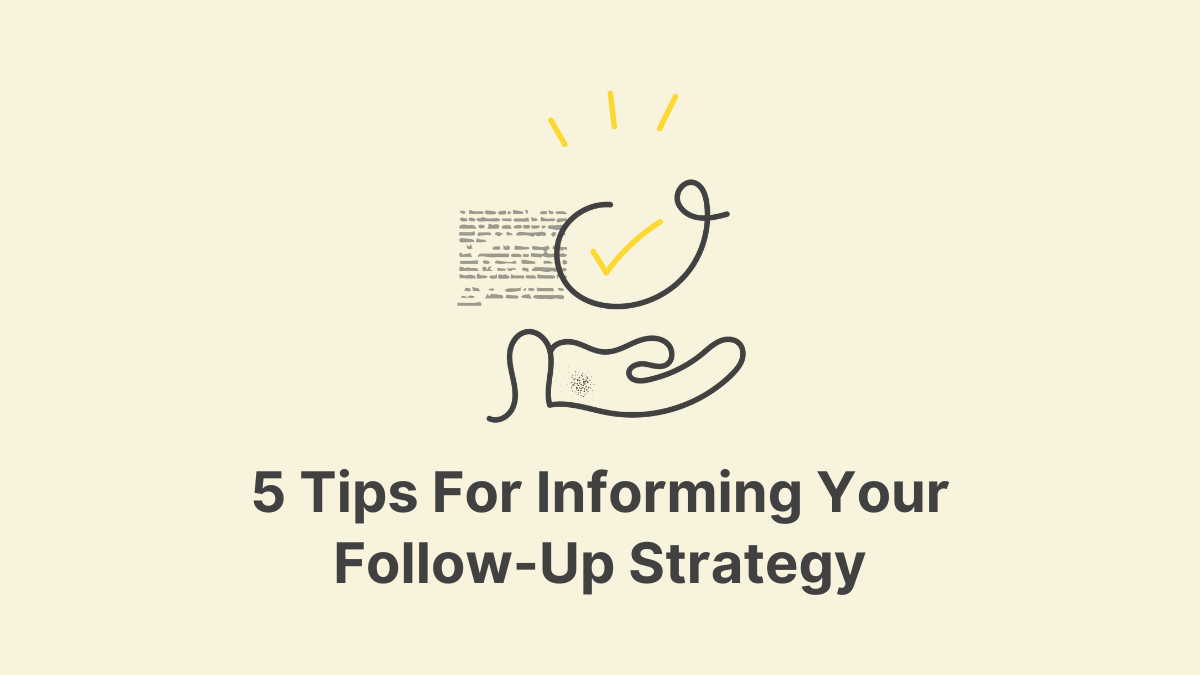
Starting with an initial idea, crafting a compelling pitch, and sharing your story with a journalist mark the initial stages of your PR efforts. However, what should you do if you don't receive a response? Most importantly, how? Crafting the right follow-up message, timing when you should send it, and how you increase your pitch’s value in your next outreach efforts are all keys to receiving a response.
A resounding 90% of journalists agreed that a single follow-up is enough, with no need for consecutive emails. Given this second opportunity to pique the reporter's interest, how can you ensure your message hits the mark?
Embrace a Second Opportunity
There are a lot of best practices when crafting an initial pitch — compelling subject line, aligning your content to reporters' interests, and more. But when it comes to the right follow-up tactics, we're more in the dark. There are a lot of reasons why your pitch could have gone unanswered, pressing deadline, PTO, etc. — but that does not mean the pitch is not relevant.
We've spoken with our journalist community about this. We know our email inboxes are all crazy, but what is the right way to follow up? Their response was simple, one well-timed email follow-up is preferred.
To maximize effectiveness with that touchpoint, we recommend having a reason to follow up again, not just the standard "checking-in" response. You may have new stats, insights, real-world examples, or story developments, depending on how long it's been since your last email. Seize the moment to share these updates. You never know what might come from it – no matter how long after your final outreach.
Indya "ICY" Wright, the founder of ArtisteHouse, and Lee Caraher, the CEO of Double Forte, shared their experience with receiving a delayed response from journalists.
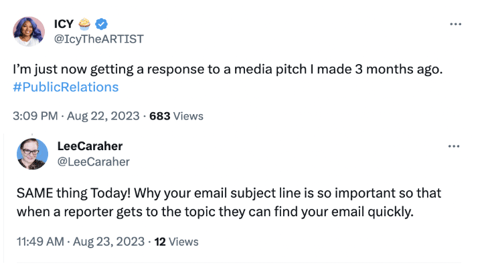
Navigate With Respect
Once you decide to initiate a follow-up, exercise discretion in timing between your initial outreach. Immediate follow-ups post-pitch do not guarantee a response and could inadvertently convey pushiness. Journalists receive hundreds of messages daily, and it’s not uncommon for them to take more than one business day to respond to emails. In fact, waiting three days to a week before initiating a follow-up email is advisable.
In episode 180 of our Coffee With a Journalist Podcast, Sarah Witten, entertainment reporter at CNBC, shared her experience with an overzealous follow-up:
“Oh, I don't mind follow-ups if they're one or within a small amount of time. I've had people follow up with me five times within three days. And it's like, "Okay. I think we both know I'm not going to answer your email."
Notably, even when journalists specify their workload or schedule constraints, they often find themselves confronted with follow-up emails. Hence, maintaining an awareness of follow-up intervals and journalist preferences is essential.
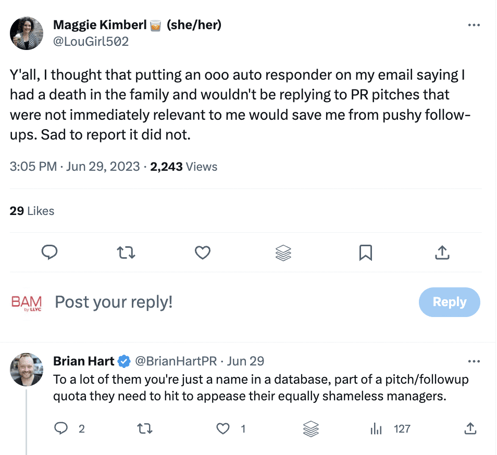
Keep Your Messages Short and Direct
Catching a journalist's interest largely hinges on keeping your message brief yet relevant. We’ve heard from 1:1 conversations with journalists that they often dedicate less than 5 seconds to read over a pitch and determine if they want to pursue it. Therefore, your lead must be captivating. It’s the same with your follow-up email. Opt for an approach that effectively re-highlights your message in a concise way. Keep it shorter than your original pitch and conclude with a direct ask for them to let you know if they would want to speak further.
Olivia Morely, Senior Agencies Reporter at AdWeek and Chris Harihar, Partner at Crenshaw Communications, shared their preferences on pitch length.
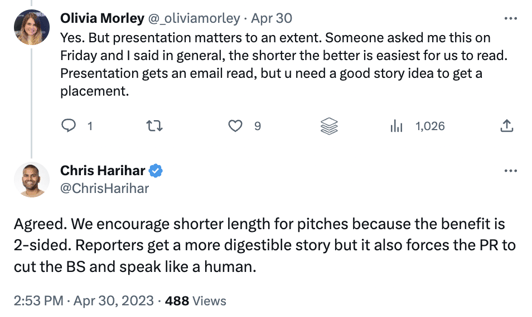
Offer a New Opportunity or Compelling Updates
Consider introducing new elements into the mix. Is there anything new you can offer the journalist? Mention any unique angles and details you may not have shared in your original pitch. You may be able to offer another unique angle, additional statistics, expert quotes, or exclusive content that makes your story relevant and engaging for its audience. If you can provide an exclusive interview with an industry expert, show your willingness to ease the email communication process by providing available times for the journalist to help facilitate the next steps. Remember, if you are following up, follow up with more value to offer.
PR Is a Marathon, Not a Sprint
You may still not receive a response even after your follow-up effort. Don't let this discourage you. PR is a long game, it may take a while. Continue to engage with alternative journalists in your media list or expand your outreach to new reporters. Remember, if your story doesn't align with the journalist's interests this time, it might resonate in the future. Prioritize nurturing relationships by tracking their social media activity and recent articles. Analyzing these insights can help you track what they’re looking for and allow you to reach out on a separate story later.
Michelle Garrett, PR consultant and writer, shared how media relations takes patience, especially when waiting to hear back from journalists.
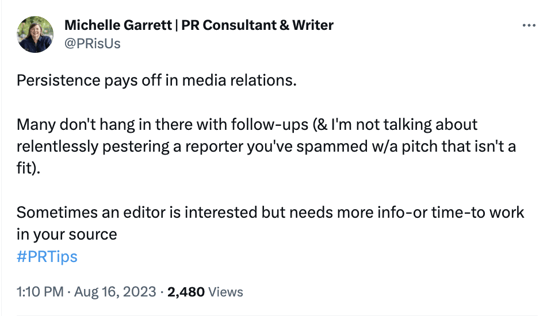
______
Want to explore opportunities to expand your outreach efforts? Check out how OnePitch can help you identify and track the right list of journalists to pitch simply by uploading your initial pitch or press release.
